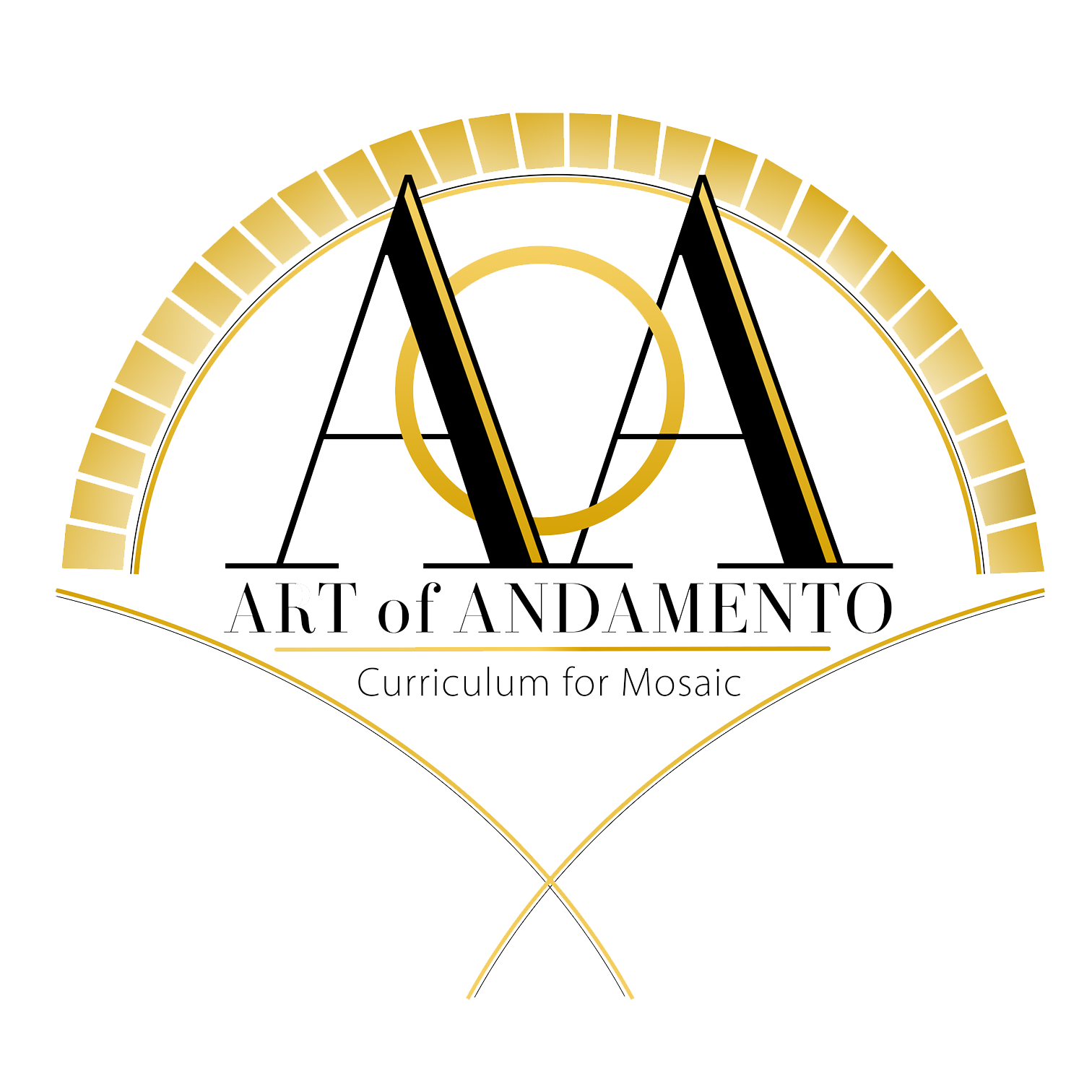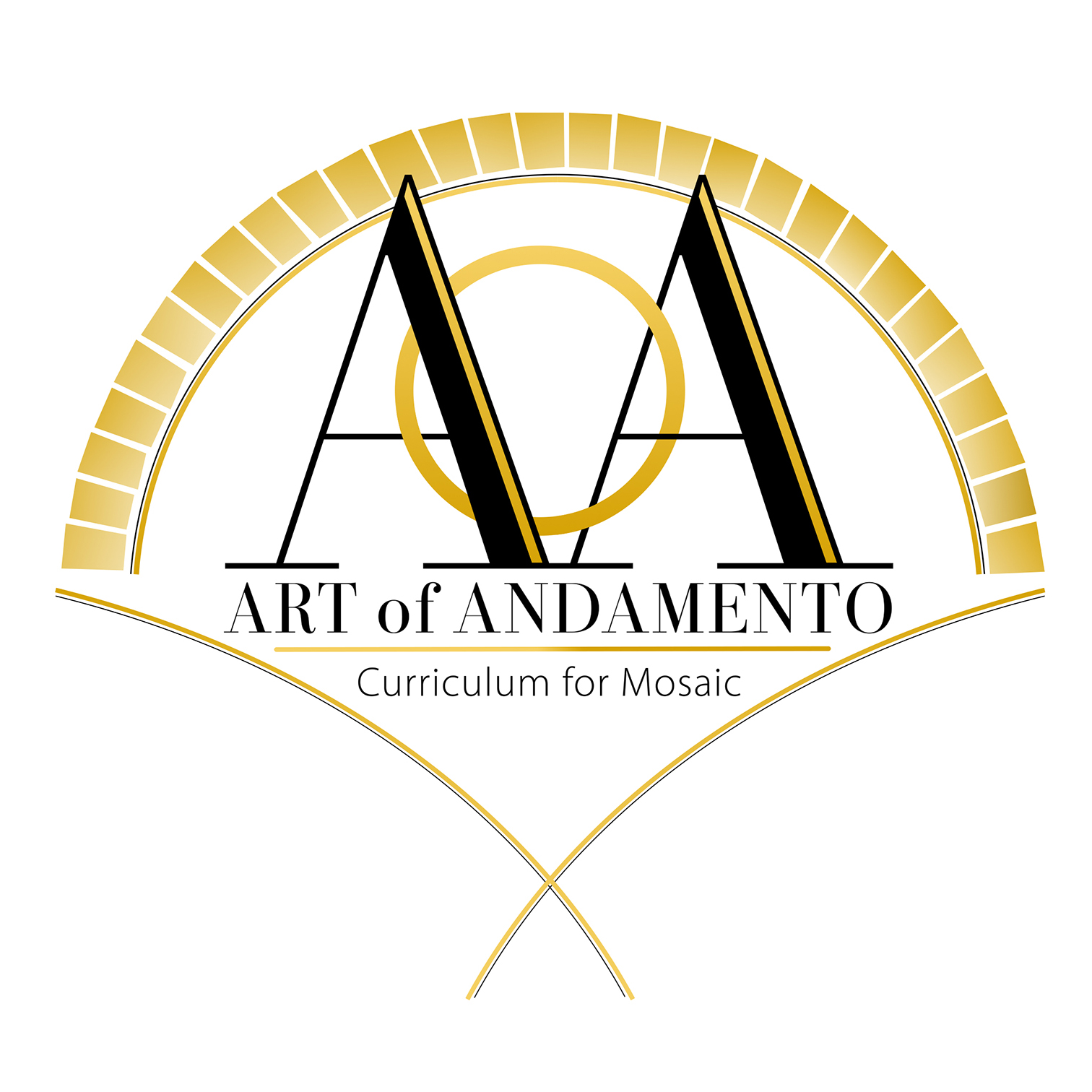
LEVEL 1 : A TASTE OF THE CLASSICS
OVERVIEW

Level 1: A Taste of the Classics, introduces five approaches to creating mosaic patterns that are frequently found in classical mosaic.
These patterns are used in combination in different areas mosaics.
To help students understand the structure of each pattern, the elements are taught in isolation, and then integrated.
In this curriculum there are multiple parts to every unit which address different learning styles and support different levels of experience.

READ
DOWNLOADABLE REOURCE PACKS
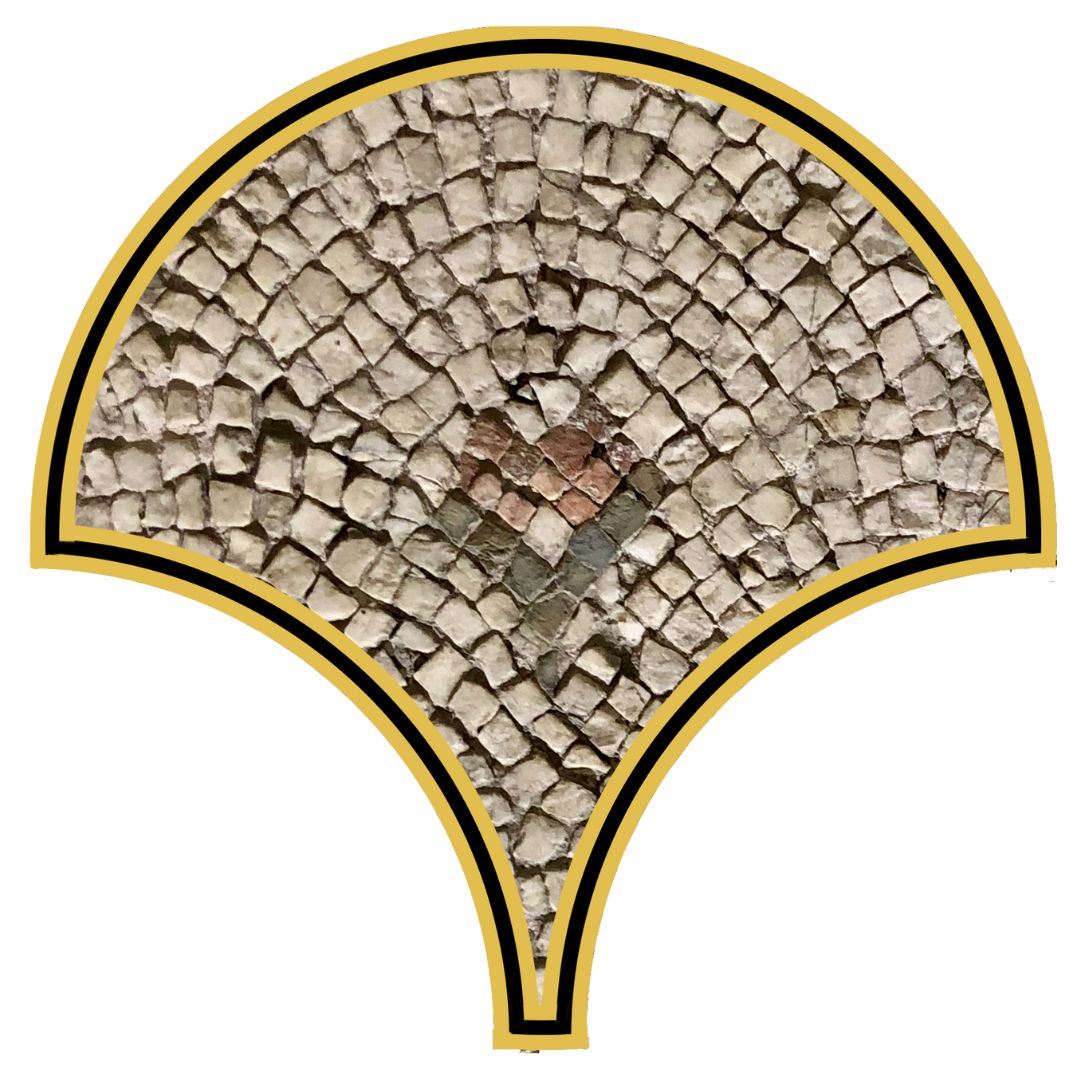
explore
THEORY PRESENTATIONS

DRAW
TESSERAE DRAWING DEMONSTRATIONS

MOSAIC
MOSAIC MAKING DEMONSTRATIONS

integrate
OPTIONAL EXTENSION ACTIVITIES
TASTER TUTORIAL : CIRCULAR PATTERN
This free 90 minute Taster Tutorial allows students to experience the style and content of units in the Art of Andamento Level 1: A Taste of the Classics, while teaching students to draw up and make a mosaic sample inspired by the circular patterns of classical pavement mosaics.
This course is free. Registration is required.
UNIT 1 : LINEAR PATTERNS
Unit 1 addresses two fundamental principles of Opus Tessellatum mosaic, specifically teaching you to use the interstices to create pattern or flow.
Building a mosaic with aligned interstices relies on colour to communicate the pattern.
Building a mosaic with offset interstices creates a line through the mosaic providing visual instructions for the eye.
These two approaches are usually combined in classical designs. In Unit 1 we learn these techniques individually before combining them.
UNIT 2 : CURVES & OUTLINING ROWS
Unit 2 introduces a vital skill for all mosaicists – how to create curves!
When mosaic designs move beyond linear patterns, we need a way to describe form. Designs including objects such as fruit, birds, fish and figures require the lines to curve.
This unit explicitly teaches students how to cut and build both gentle (simple) and tight (complex) curves that respond to changing shapes within the design.
Feature forms in mosaic are often outlined to separate them from the background field with an outlining row that also require curves to fluidly follow the form.
The samples for this unit combine skills learnt in Units 1 and 2.
UNIT 3 : CIRCULAR PATTERNS
COMING OCTOBER 2024
Unit 3 takes an in-depth look at circular patterns.
Often referred to as Fan Shaped Mosaic or Opus Circumactum (which means going around a circle), this style of Opus Tessellatum relies on basic geometry with the principles and variables in the designs hinging on the radial length of the circles and the horizontal and vertical distance between centre points.
The incredible variation in the implementation of circular patterns in classical mosaic is almost infinite. This unit extends the content introduced in the Taster Tutorial and builds on knowledge from Units 1 and 2.
UNIT 4 : DECORATIVE KNOTS
COMING NOVEMBER 2024
Unit 4 explores decorative knots with a focus on a simplified Solomon’s Knot.
The variations in decorative knots seem infinite however they all rely on similar principles, building the design around key tesserae and successful lines that clearly direct the eye though the pattern, weaving over, under and around the design.
We start with a simplified Solomon’s Knot (made of two interlocking links) and highlight the critical areas to ensure the design ‘reads’ well.
The extension activities for this unit introduce more complex decorative knots and twists that are built on the same principles.
UNIT 5 : ABSTRACT PATTERNS
COMING DECEMBER 2024
This unit takes a different direction to Units 1- 4 as here we abandon the line. We walk away from andamento and learn to create patterns that do not rely on square tesserae.
Many students come to mosaic through Crazy Paving where pieces are broken randomly then reassembled. This technique has classical roots in building and paving techniques and relies on 4,5 or 6 sided pieces used to create an interlocking pattern.
Crazy Paving has as Latin name Opus Segmentatum, but it may well send you totally crazy as it is much harder than it looks!
In this unit I teach you how to identify, draw, cut and lay a sample in Opus Segmentatum that is deliberately without flow, yet still harmonious to the eye.
In the extension activities, students can explore a range of other non-linear patterns including Opus Scutulatum (lozenges), Opus Filignum (basketweave) and Opus Spicatum (herringbone).
LEVEL 1: A TASTE OF THE CLASSICS
FREE
TASTER TUTORIAL
- 90 minutes of FREE content
Glossary of Key Terms
Circular Pattern Drawing
Circular Pattern Mosaic
Resource Pack
Printable Templates
Permanent Access
UNIT 1
LINEAR PATTERNS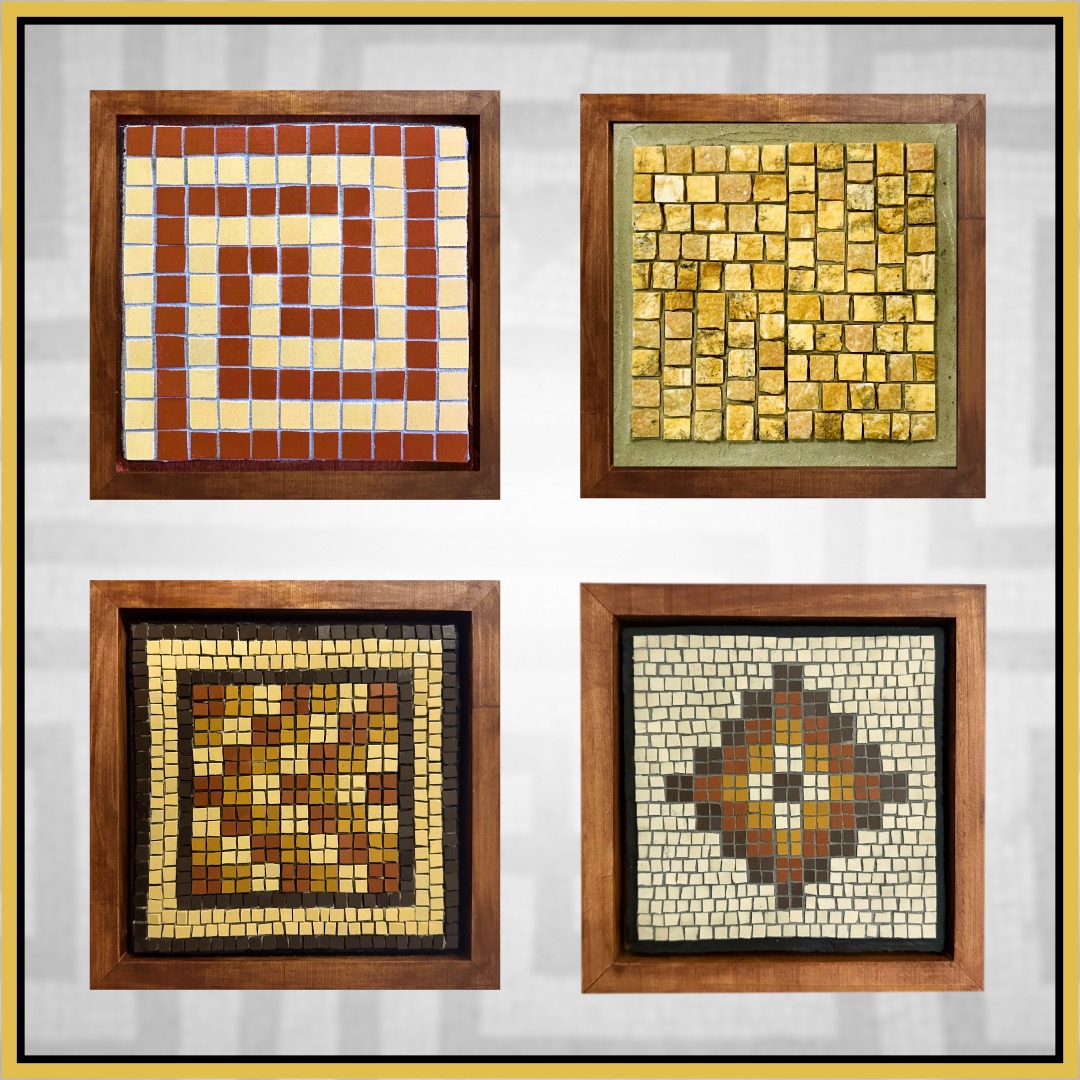
Theory Presentation
Aligned Interstices Drawing & Mosaic
Offset Interstices Drawing & Mosaic
Extension Drawing & Mosaic
Resource Pack
Printable Templates
Extension Options
Tools and Materials
Where to Buy List
50% Discount for prior students
Permanent Access
Does not include Andamento Academy Membership
UNIT 2
CURVES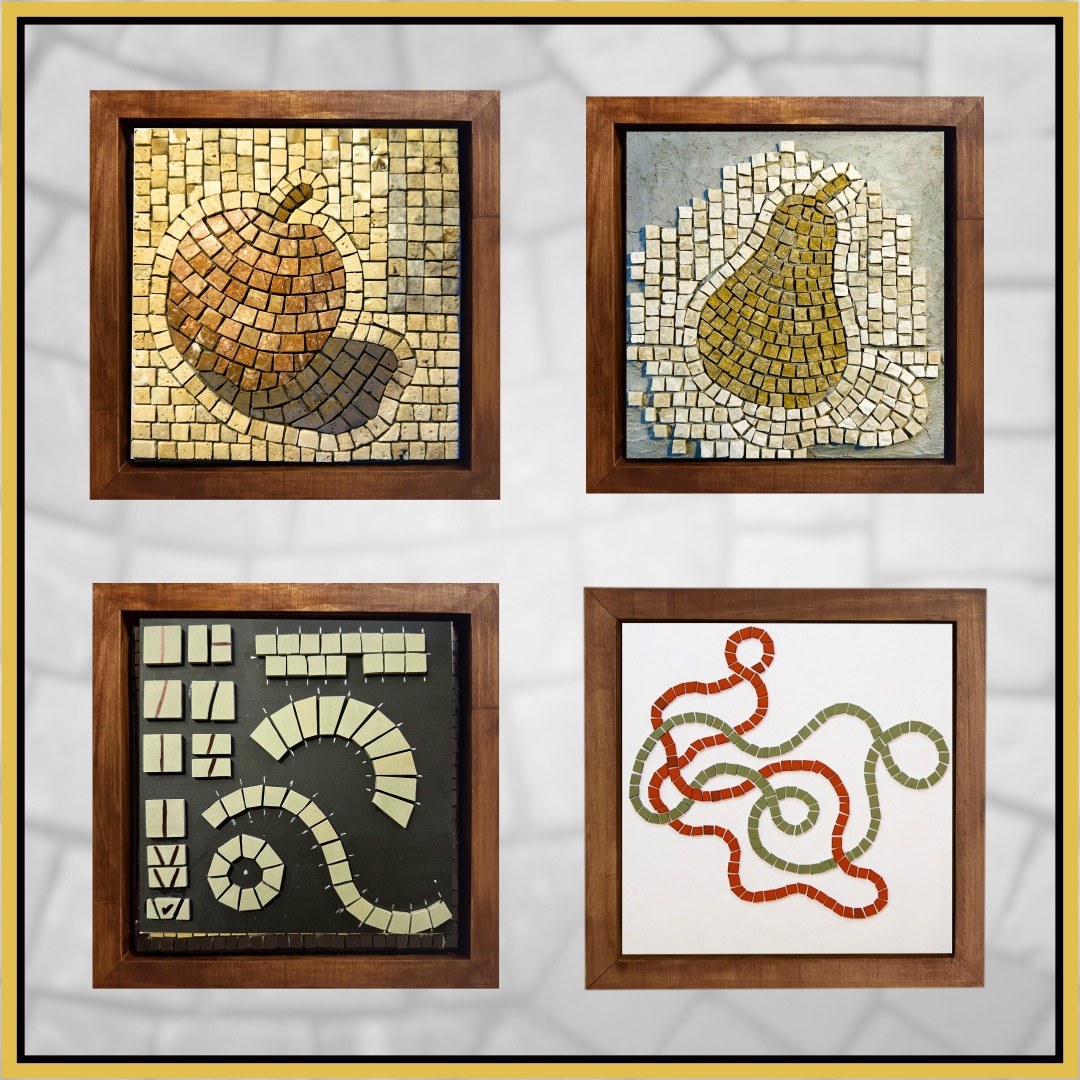
Theory Presentation
Curve Drawing Exercise
Curve Cutting Sampler
Curve Building Exercise
Apple Drawing & Mosaic
Resource Pack
Printable Templates
Extension Options
Tools and Materials
Where to Buy List
50% Discount for prior students
Permanent Access
Does not include Andamento Academy Membership
LEVEL 1
BUNDLE
Bundle price saves $100 USD
Unit 1: Linear Patterns
Unit 2: Curves
Unit 3: Circular Patterns (October 2024)
Unit 4: Decorative Knots (November 2024)
Unit 5: Abstract Patterns (December 2024)
Resource Packs
Printable Templates
Extension Options
Tools and Materials
Where to Buy List
50% Discount for prior students
Permanent Access
Does not include Andamento Academy Membership
Level 1 was a wonderful journey into classical mosaics, and I enjoyed the level of involvement required of students. A great breadth of techniques was taught, accompanied by fascinating information about ancient Roman and Hellenic mosaic practices and styles. I enjoyed the course immensely and will now move to Level 2 to immerse myself in the theory and practice of contemporary mosaic art.
Thanks, Caitlin, for your professional and approachable manner – you are a natural teacher.

